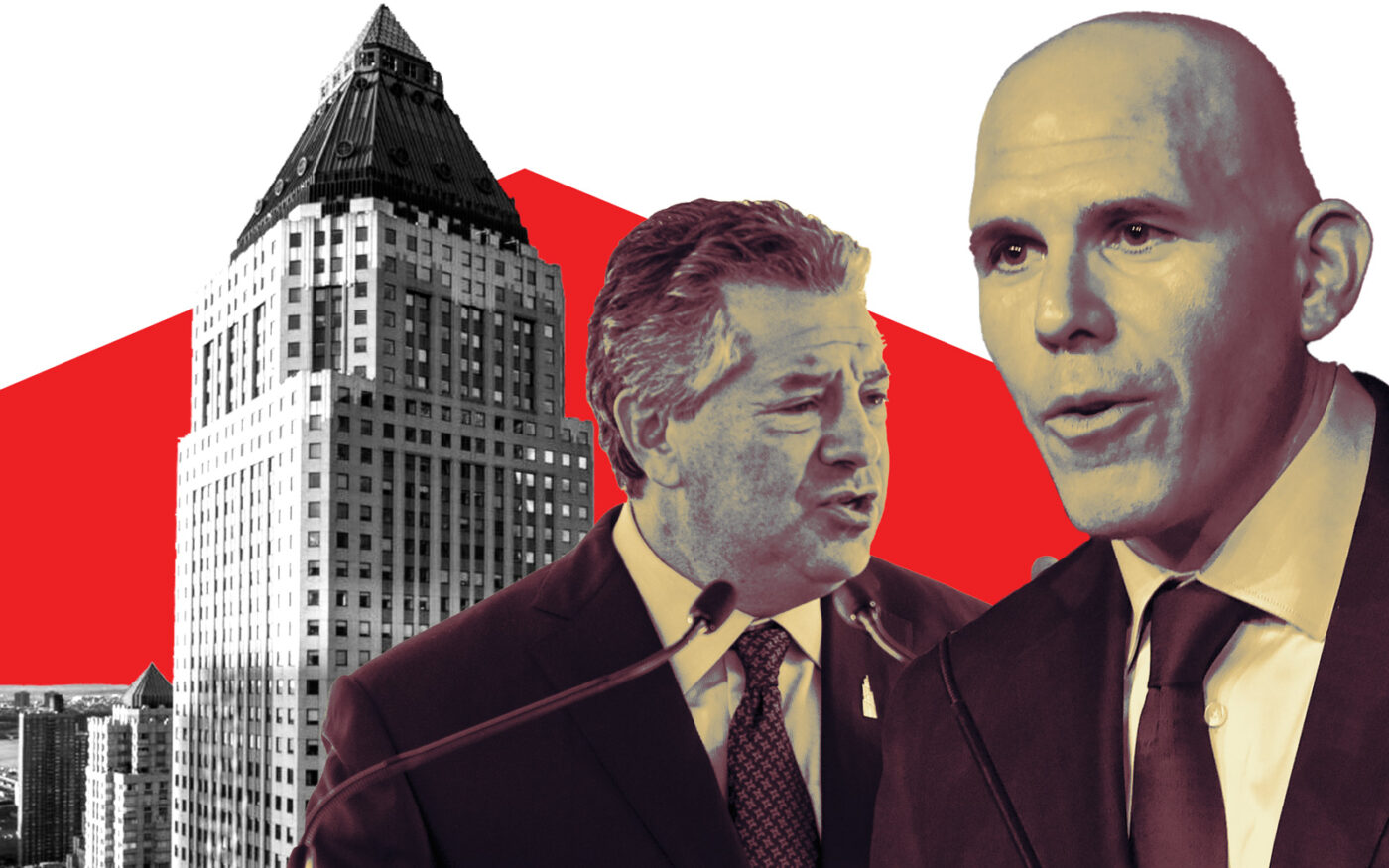Slices of SL Green and RXR’s massive debt on a Midtown office complex has been watchlisted as an upcoming lease rollover threatens to open a yawning hole in the building.
Worldwide Plaza, a three-building portfolio that also has retail and residential space, backs a $940 million loan. At the end of last year, financials were still strong. The landlords were pulling in twice the revenue needed to make monthly loan payments and reported nearly full occupancy, according to Morningstar.
The trouble is that occupancy rate has an expiration date — next year. And maintaining it figures to be difficult.
The complex’s second-largest tenant, the huge law firm Cravath, Swaine & Moore, plans to ditch its 30 percent chunk of the decades-old space next year for newer digs in Hudson Yards, Fitch Ratings noted.
Marc Holliday’s SL Green and Scott Rechler’s RXR also run the risk that Japanese investment bank Nomura Holdings will leave its lease early. Since the spring, Nomura, which occupies nearly 40 percent of the buildings’ rentable area, has been itching to move and shed square footage in the process.
The lease expires in 2033 but the bank can exercise an option to leave in 2027 — the same year Worldwide Plaza’s loan comes due.
Amid that uncertainty, Fitch increased its “probability of default assumption” on the debt.
Neither Cravath, Swaine & Moore, nor Nomura returned requests for comment. SL Green and RXR declined to comment.
The vacancy risk at Worldwide Plaza comes as office owners citywide grapple with a market in secular decline.
Some commercial landlords, notably Holliday, have continued to champion the asset class and extoll the virtues of in-office work. Meanwhile, Rechler and others have accepted that some properties will never recover and have moved to hand back the keys on buildings worth less than their mortgage balances.
Valuations on some office buildings are expected to drop even further. Vacancy rates, meanwhile, continue to climb. At the end of the second quarter, Manhattan office availability was just shy of 20 percent, Avison Young found — the highest since the brokerage started tracking the market in 2005.
The subleasing market is not doing office landlords any favors. Amid the surge in so-called direct availability, Avison Young found “strong demand for high quality sublease space.” There is plenty of that on the market.
Read more



